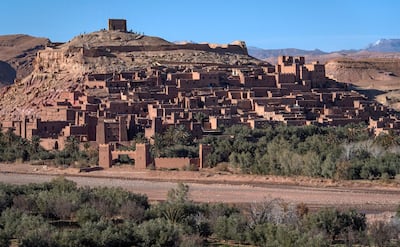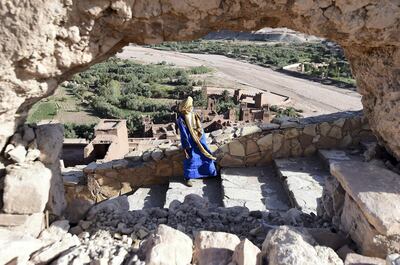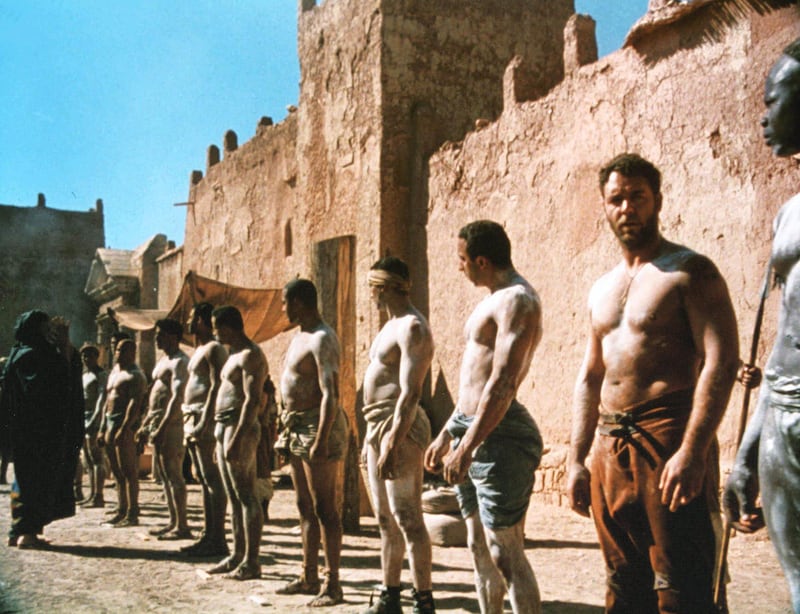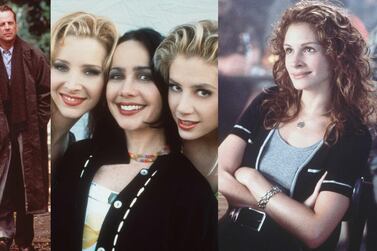"Are you not entertained?"
It is one of the most famous lines in modern film, uttered by Russell Crowe's Maximus Decimus Meridius as he surveys a crowd of stunned spectators after slaying a series of foes in his first gladiatorial match.
But, this memorable Gladiator scene was shot far from Rome. Instead, the portion of the historical drama in which Maximus was sold into slavery and trained to become a gladiator was filmed in Morocco.
The Ridley Scott epic was not the first Hollywood movie to film in Ait Benhaddou, a fortified village – known as a ksar – located around a three-and-a-half hour drive south-east of Marrakech.
Films including Oedipus Rex (1967), The Jewel of the Nile (1985) and The Mummy (1999) flocked to the Unesco World Heritage site to use its desert landscape and earthen clay architecture as backdrops.
But, as Gladiator marks its 20th anniversary – it first hit cinemas in May 2000 – we take a look back at how the ksar was transformed into a bustling gladiatorial training ground.
The drama, which was shot in 1999, was primarily filmed in three locations. A forest in Surrey housed the opening battle scenes in the forests of Germania, while the locations of Ancient Rome were recreated in Malta.
Morocco, meanwhile, was home to the part of the film where Maximus, an esteemed former general of the Roman Army, is brought to heel.
After defying the cowardly and spiteful emperor Commodus (Joaquin Phoenix) following the murder of emperor Marcus Aurelius (Richard Harris), an injured Maximus is found by slavers, who transport him to Mauretania Caesariensis, a Roman province located in what is modern-day Algeria.

Here, Maximus is sold to the trainer Proximo, played by Oliver Reed, and becomes a champion who is taken to compete in Rome's Colosseum, where he finds himself face to face with Commodus.
The scenes in which an injured Maximus is taken to Mauretania Caesariensis, where he is sold by a trader played by Omid Djalili, studies at Proximo's training school, and engages in his first gladiatorial match, were all filmed in Morocco.
An arena was purpose-built at the foothills of Ait Benhaddou for the tense scenes in which Maximus defeats a number of opponents while handcuffed to fellow slave Juba, played by Djimon Hounsou.
The distinctive buildings of the ksar can be glimpsed in the background, as people cheer on the fighter nicknamed "the Spaniard".
Note this clip (filmed in Morocco) features gory battle scenes, with the film rated R in the US:
The crew used "basic materials and local building techniques" to craft the 30,000-seat mud brick arena, according to Gladiator: The Making of the Ridley Scott Epic.
Ait Benhaddou sits along the former trade route between the Sahara and Marrakech, crossing through the Atlas Mountains, with the site believed to have been fortified since the 11th century.
Its current buildings are believed to date to the 17th century, and the location was added to the Unesco World Heritage list in 1987, ensuring its preservation.
The cast and crew shot for three weeks in Morocco, in total.
Some Gladiator scenes were also filmed in the nearby Atlas Studios, a film studio located just outside the city of Ouarzazate and about a 25-minute drive from Ait Benhaddou.
The studio's lot, which has been used by the cast and crew of 2019's Aladdin as well as the 2006 Brad Pitt drama Babel, housed the market square where slaves were sold, as well as the holding area where the slaves are contained before they fight, according to Insider.
Following the release of Gladiator, Ait Benhaddou has gone on to host several other Hollywood blockbusters, including 2004 Greek epic Alexander and 2010's Prince of Persia, as well as hit HBO fantasy Game of Thrones.
The town of Ouarzazate is depicted as the fictional city of Pentos, and Ait Benhaddou is where Danerys defeats the slave merchants of Yunkai.

In fact, Gladiator director Scott returned to the spot to film scenes for 2005's historical drama Kingdom of Heaven.
Crowe has since recalled that many of his most famous lines were improvised while shooting in Morocco.
"Here was a situation where we got to Morocco with a crew of 200 and a cast of a 100 or whatever, and I didn't have anything to learn. I actually didn't know what the scenes were gonna be," the New Zealand-born actor said on Inside the Actors Studio in 2004.
"We had, I think, one American writer working on it, one English writer working on it, and of course a group of producers who were also adding their ideas, and then Ridley himself; and then, on the occasion where Ridley would say, 'Look, this is the structure for it – what are you gonna say in that?' So then I'd be doing my own stuff, as well.
"And this is how things like, 'Strength and honour,' came up. This is how things like, 'At my signal, unleash hell,' came up. The name Maximus Decimus Meridius, it just flowed well."







